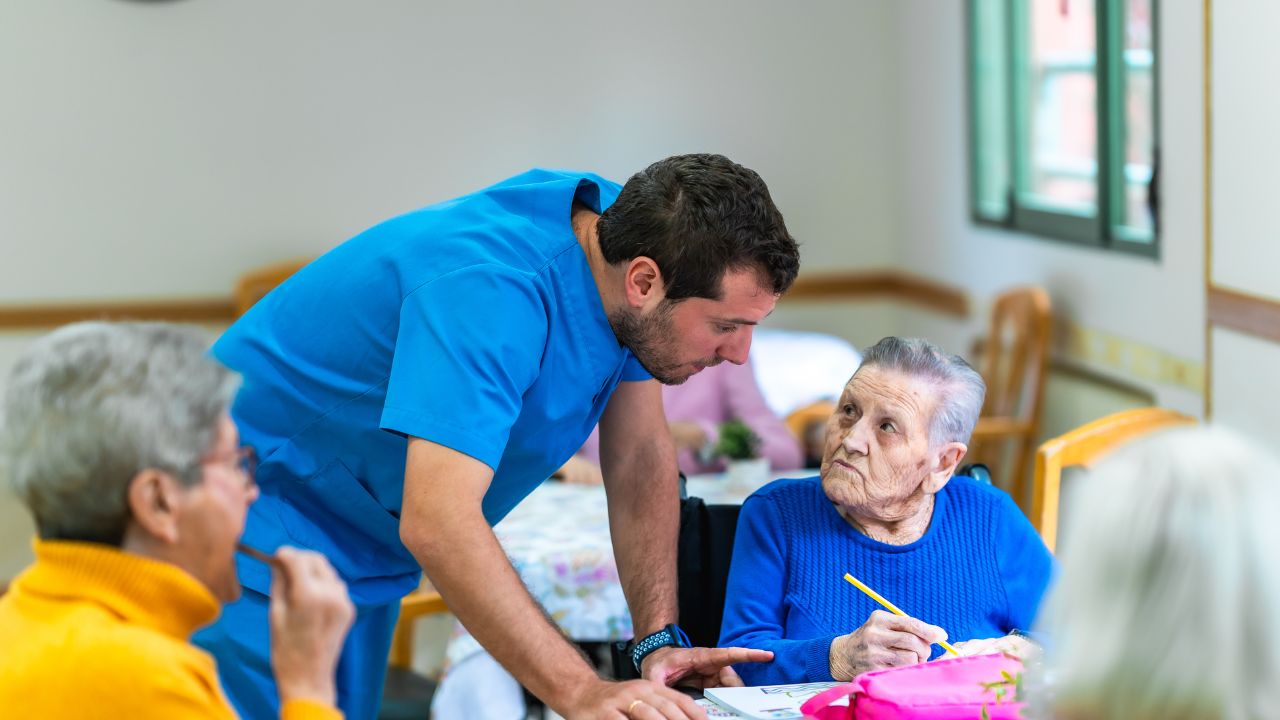Restorative care programs are usually federally-regulated programs that are provided in long-term care facilities (required by the Centers for Medicare and Medicaid Services). Restorative care aims to help facility residents maintain the highest level of functioning possible. It is a general trend that the individual capabilities of residents in long-term care facilities to perform their routine activities of daily living (ADLs) decline as their time in a facility lengthens. A therapeutic care program aims to offset or prevent this tendency, thereby improving quality of life by focusing on the value of each person's independence, whatever level.
Who Creates Restorative Care Plans?
Because each person's capabilities and level of independence for ADLs are unique, restorative care plans are usually created explicitly for each resident. A multidisciplinary team of clinicians may construct restorative care plans, including a physical and/or occupational therapist, physician, and nurses.
What is Restorative Nursing?
Restorative nursing typically occurs when a patient is discharged from rehabilitation or skilled therapy (i.e., physical, speech, or occupational therapy). Skilled therapy works with patients to relearn and improve certain skills after a fall, surgery, accident, stroke, etc. Once their improvement has reached the highest level possible, they conclude their rehabilitation. Restorative care can then take over to maintain the level gained through rehabilitation. According to the article "Keeping Residents in Motion: A Common Goal of Activities and Restorative," published for the American Association of Post-Acute Care Nursing, restorative care can be split into ten categories:
- passive ROM
- active ROM
- splint or brace assistance
- bed mobility
- transfer
- walking
- dressing and/or grooming
- eating and/or swallowing
- amputation/prosthesis care
- communication
Many categories are self-explanatory by name, but the first two require further explanation.
What are Passive ROM and Active ROM?
ROM is health setting jargon and is the acronym for "range of motion." So here, we're referring to the passive range of motion and active range of motion. Passive range of motion is when someone or something else (for example, a physical therapist or one of their therapy devices) causes movement while the patient cannot or is not allowed to move. Alternatively, active range of motion is the autonomous movement of the patient. Muscles and joints move, contract, and receive stimulation in both cases.
Who Provides Restorative Care?
You probably noticed that most of the ten restorative nursing categories involve ADLs, which is high on the responsibilities list for certified nursing assistants in the long-term care setting. Because restorative care is so important for each resident, therapist and nurse involvement and supervision are necessary; however, CNAs also represent an essential cog in the restorative care wheel: they assist the residents with some restorative exercises.
Can Any CNA Work as an RNA?
CNAs can become restorative nurse assistants (RNAs called restorative aides). Just as every state has requirements to become a CNA, the same is true of becoming an RNA. Some states don't have any requirements. Nevertheless, if this position interests you as a CNA, you should ask your facility supervisor for the appropriate steps. Additional formal training will likely be required to begin working as a restorative aide.
Read Charity's Story of Becoming a Restorative Aide
Restorative Nursing Jobs
RNs (registered nurses) with jobs in restorative care can be found primarily in long-term care facilities. They are responsible for working with clinicians of other disciplines to develop restorative care plans and standards. They take on the responsibility of supervision and direction of the execution of restorative care plans. They must understand restorative care regulations and documentation policies to meet federal guidelines and communicate competently with the administrative and interdisciplinary team members about restorative care and with the residents and their families. Most RN jobs in restorative nursing will set experience in restorative care or completing training in techniques as a preferred (if not required) qualification.
Challenges to Restorative Care Nursing
Restorative care nursing is an endeavor that calls on one of the basic fundamentals of nursing; prevention. Restorative care aims to prevent the resident's decline and increased dependence on ADLs, and yet it is not without its challenges to the nurses and aides themselves. According to a study on restorative care and its efficacy, nurses identified several challenges, some of which may be addressed by additional training and experience:
- Difficulty in motivating residents to actively participate in restorative care who have already established a dependency on assistance with ADLs.
- They need training on how to motivate residents with cognitive impairment.
- They fear that restorative care exercises may result in a fall and/or injuries.
- They felt they had limited time but the pressure to complete restorative care tasks.
Want more information? Learn the differences between CMA vs CNA.














